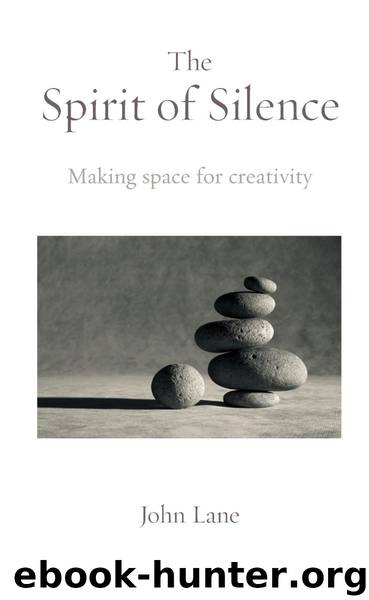The Spirit of Silence by John Lane

Author:John Lane [John Lane]
Language: eng
Format: epub
ISBN: 9781907448515
Publisher: UIT Cambridge Ltd.
Published: 2016-04-07T04:00:00+00:00
The Indian sage and social reformer Vinoba Bhave (1895–1982), no less imbued by a sense of the divine, also recorded his conviction that an action dedicated to the Lord—in his case the Lord Krishna—was its own reward. “If a farmer serves his cattle with this noble bhavana (deep feeling of reverence), even this ordinary work of his becomes worship of the Lord. In the same way, if the mistress of the household tries to feed and please the family by keeping the kitchen clean, lighting the fire and preparing pure and wholesome food, all these acts of hers are yajna, sacrificial action.”
But of course in the UK we no longer live in a culture where work is undertaken in a spirit of service that moves towards the kind of timelessness implicit in his words; farmers in the West do not ‘serve’ their animals, nor do homemakers maintain their houses as a sacrificial action. The majority see work as an unpalatable but necessary chore. With this dispiriting notion most people live their lives. Nonetheless, it is not impossible to perform every kind of act, however commonplace, in a manner conducive to the reverential spirit described by George Herbert and Vinoba Bhave. But to do so we need to make a simple but revolutionary shift of viewpoint: to replace all those lingering angers, all those choking resentments, all that restlessness, with a calm acceptance of our prospects for the future, a sense of gratitude for life’s varied and manifold gifts, and a determination to fulfil our work to the best of our ability.
There are certain calming activities whose pursuit is more conducive to bhavana than others. These include the nation’s most popular and widespread leisure activity, gardening. Other equally calming pursuits include needlework and flower arranging, making and listening to music, and baking. Another especially rewarding activity is the conscious creation of a lovely environment: a home can be a continuous refreshment, a harvest of delight and creativity.
One who experienced his home in terms of such delight was the painter Pierre Bonnard (1867–1947), whose subject matter was that which lay immediately to hand. In 1926 he purchased a modest late 19th-century dwelling, the Villa du Bosquet above Le Cannet on the French Côte d’Azur; the house and its immediate environment supplied the painter with the subject matter he required.
By choice Bonnard lived simply with few luxuries, apart from a modern bathroom and a car. Visitors to Le Bosquet were invariably struck by the simplicity of the furnishings and by the small ‘impractical and uncomfortable workroom’ that was his studio. His nephew Charles Terrace once likened the painter’s bedroom to a monastic cell.
The silence of these rooms evokes the anonymous self-portrait he once gave a French journal: “The artist who paints the emotions creates an enclosed world—the picture—which, like a book, has the same interest no matter where it happens to be. Such an artist, we may imagine, spends a great deal of time doing nothing but look, both around and inside him.”
Bonnard never ceased to look—and celebrate what he saw.
Download
This site does not store any files on its server. We only index and link to content provided by other sites. Please contact the content providers to delete copyright contents if any and email us, we'll remove relevant links or contents immediately.
Inner Engineering: A Yogi's Guide to Joy by Sadhguru(6722)
The Power of Now: A Guide to Spiritual Enlightenment by Eckhart Tolle(5603)
Fear by Osho(4655)
Ikigai by Héctor García & Francesc Miralles(4123)
The Art of Happiness by The Dalai Lama(4063)
The Ultimate Bodybuilding Cookbook by Kendall Lou Schmidt(3883)
Yoga Therapy by Mark Stephens(3701)
The Little Book of Hygge by Meik Wiking(3645)
The Healing Self by Deepak Chopra(3473)
Why Buddhism is True by Robert Wright(3401)
Being Aware of Being Aware by Rupert Spira(3229)
The Hatha Yoga Pradipika (Translated) by Svatmarama(3227)
Shift into Freedom by Loch Kelly(3133)
Wild Words from Wild Women by Stephens Autumn(3090)
Work Clean by Dan Charnas(3048)
Happiness by Matthieu Ricard(2989)
More Language of Letting Go: 366 New Daily Meditations by Melody Beattie(2965)
Yoga Body & Mind Handbook by Jasmine Tarkeshi(2832)
Why I Am Not a Feminist by Jessa Crispin(2695)
